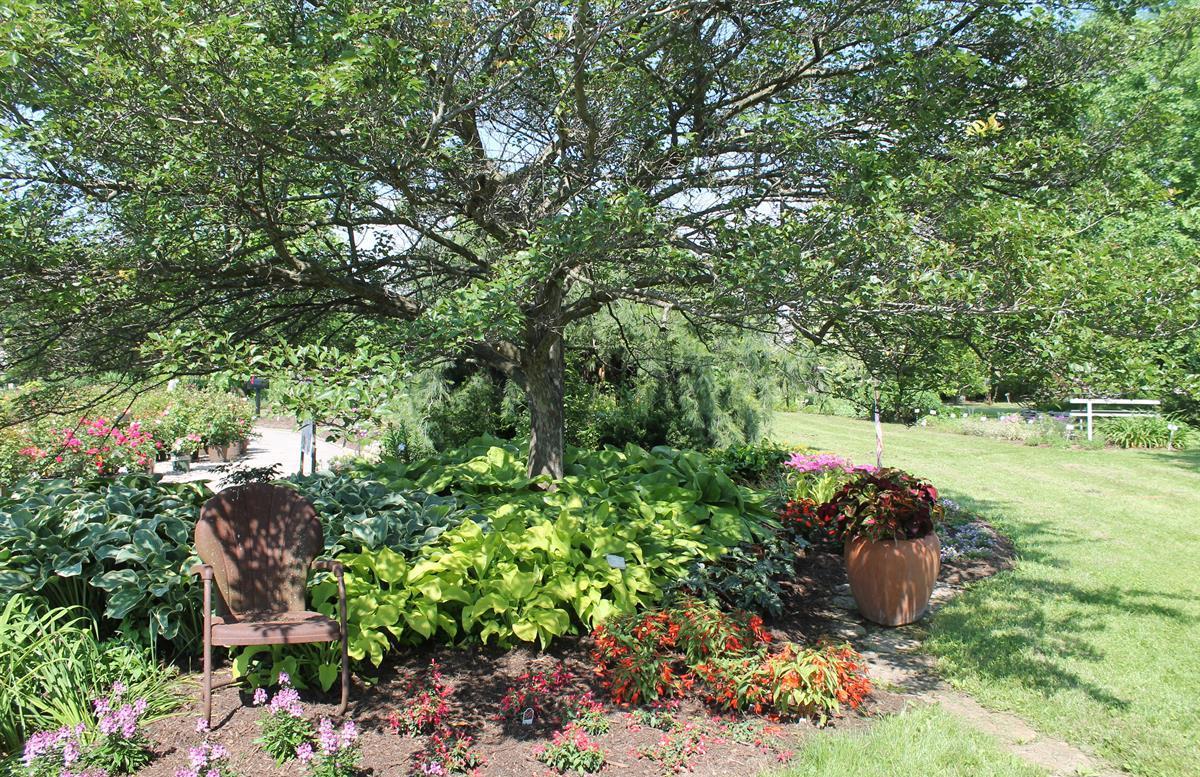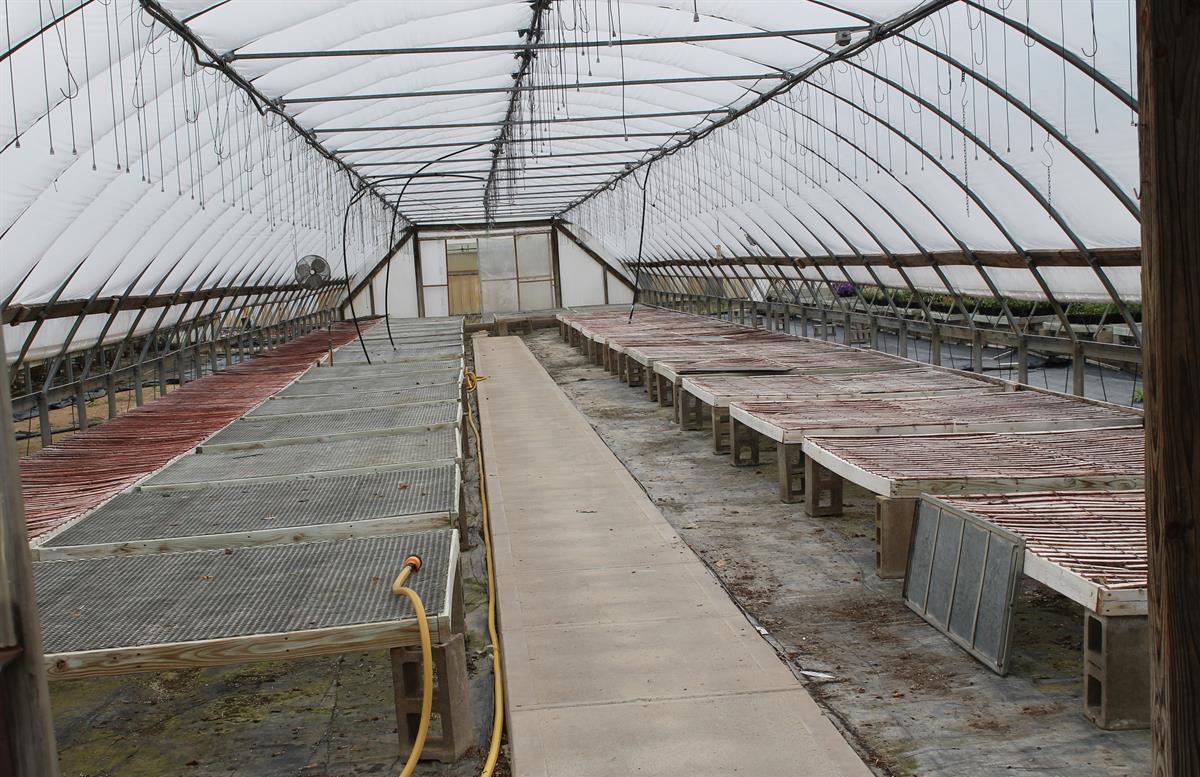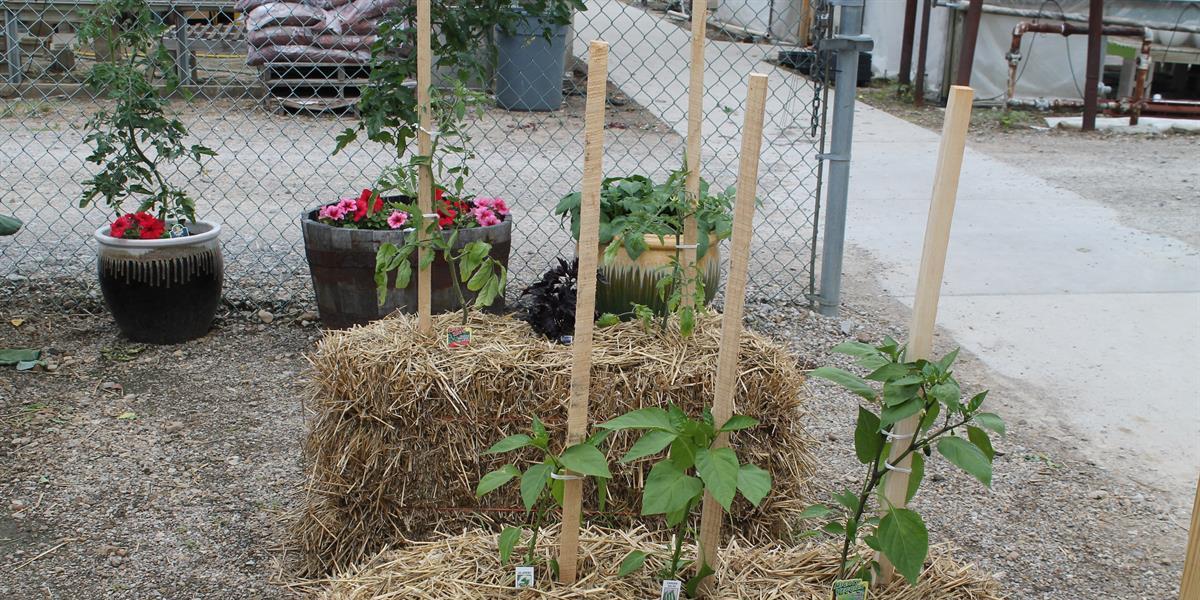Perennials
Buy 3
Get 1 Free!
(Free one of equal or lesser value)
Sale ends June 7th
For other great specials visit our website or sign up for our "Specials E-Newsletter" sent out once a week with our weekly specials.
|
|
Is it safe to plant in the summer?
Yes, you can plant all summer long as long as the ground is workable. Best time to plant is in morning or evening when the heat is not at its strongest. Make sure to water the plants in after planting to give them a great start. |
|
Hydrangea
'Tuff Stuff'
This is one tuff cookie for your garden. Topping 2-3 feet tall and wide this beautiful hydrangea works in a smaller garden space.
Lacecap flowers bloom pink, but change to blue with the PH of the soil. Continuous blooms from spring to fall.
|
|
Sluggo
Sluggo provides superior slug and snail control for all home gardens. The iron phosphate and bait combination immediately stops slugs and snails from feeding after the bait is eaten. The pests then die within a few days. Free-flowing pellets make it easy to spread throughout the garden, along vegetable rows, and around ornamentals.
|
|
Farmers Market Coming To Wilson's
|
|
Farmers' Market
will be held at Wilson's on Fridays from 3-6 pm starting June 12th.
Any interested vendors may contact Michelle at 740-763-2873 or office@great-gardeners.com.
|
|
Wilson's Garden Center
10923 Lambs Ln.
Newark, Ohio. 43055
740-763-2873
740-763-2874 (Fax)
office@great-gardeners.com
|
|
June Hours
Monday - Saturday:
9 am - 7 pm
Sunday:
11 am - 6 pm
|
|
We are a family owned and operated garden center specializing in plants that thrive in Central Ohio
For more information about our store please
Visit Our Website |
|
|
Good Afternoon Great-Gardeners,
Hope you have your vegetable and flower gardens planted, If not we still have plenty to choose from. It is not to late to plant.
In this issue, planting a straw bale garden, cucumber beetle, and June to do's.
If you have any questions, comments or suggestions, hit reply. I would love to hear from you. As always, have a great-gardening day.
Sincerely,
Holly |
|

|
|
Display gardens are being planted.
|
|
|

|
|
The back greenhouses are starting to look empty.
|
|
|
| Join us this Saturday, June 6th for our Rose Day. Enjoy refreshments and advice from the Moundbuilders Rose Society who will be here from 10 am - 2 pm to answer your rose questions.
All 3 gallon roses
will be
$5 off
regular prices
June 6th only!
|
|
| Planting A Straw Bale Garden |
|

|
|

|
|
Click Picture To View Straw Bale Gardening Video
|
|
|
After your bales have been conditioned the next step is to plant them.
What you need:
- Garden Claw
- Plants
- Potting Soil
Using a garden claw is the best way to remove some of the straw for making holes for the plants. Other wise it takes awhile to remove the straw by hand.
Smaller plants work best versus bigger plants so your not having to dig big holes.
Line each of the holes with some potting soil before planting the plants into the bale.
Keep an eye on plants for watering needs.
Make sure to fertilize once a week. The straw does not provide any nutrients for the plant. We recommend using Organic Plant Magic. |
|
Be on the look out for Cucumber beetles in your garden.
Cucumber beetles damage cucurbit crops, such as cucumber, squash, pumpkin and melon.
There are two different varieties, stripped and spotted.
The spotted cucumber beetle is greenish yellow and has twelve black spots on its back.
The striped cucumber beetle is yellowish orange and has three black stripes on its back.
Both pests are about 1/4 of an inch long and are winged making it easy to fly from plant to plant.
Cucumber beetles eat the leaves, flowers and fruit of the plants causing great damage. Their larvae feed on the roots.
They are also the carriers of cucumber bacterial wilt and cucumber mosaic. Which there is no cure for once the plant has been infected.
There are multiple ways to controlling them in the garden:
Attract beneficial insects:
Natural predators include soldier beetles, tachnid flies, parasitic nematodes, and braconid wasps. These beneficial insects pray on cucumber beetles and can reduce their numbers.
Planting Repellent Plants:
Broccoli, calendula, nasturtiums, radish, rue and tansy are among a few repelling plants to grow.
Floating Row Covers:
Can provide a bug-and beetle-free period which allows the plants to thrive and develop. Row covers are removed at the onset of flowering to allow for bee pollination.
Use Organic Pesticides:
Insecticidal soap is the most common organic remedy for spraying cucumber beetles. |
|
| There is still plenty of time to plant. Just about everything can be planted now and will take right off and grow because it is warm. |
|
|
|
|
| Mulch everything; mulches help maintain a more uniform soil temperature, retain moisture, and helps eliminate weeds. It looks great, too. |
|
| Cabbage, green onions, leaf lettuce, rhubarb, asparagus, broccoli and strawberries can be harvested this month. Yum! |
|
|
|
|
| Monitor rainfall and water as needed (Weekly–Not daily, except for baskets and planters). For baskets and planters, get smart and install drip irrigation on timers and relax. |
|
| Fertilize as needed. That means keep feeding. The best looking gardens are the ones that are fed regularly! |
|
|
|
|
| Continue Fruit Tree, Rose, and Vegetable Spray/Dust Programs–organic or otherwise. Watch vegetable garden for developing insect or disease problems. |
|
| Houseplants can be moved outside to a shady protected area and that will often rejuvenate their growth. |
|
|
|
|
| Divide spring-blooming perennials now. |
|
| Spring-blooming shrubs should be pruned by the first part of June so that they will branch and set a bunch of new flowers for next Spring. |
|
|
|
|
Deadhead spent flowers from Rhododendrons and Azaleas to
improve next year’s blooms. Fertilize them with Master Nursery Acid fertilizer immediately after they have bloomed. |
|
| Keep hedges maintained by removing the new ‘gangly’ growth for a tidy appearance. |
|
|
|
|
| Pinch mum tips back to encourage branching to get those full bushel basket size plants full of flowers in fall. |
|
|